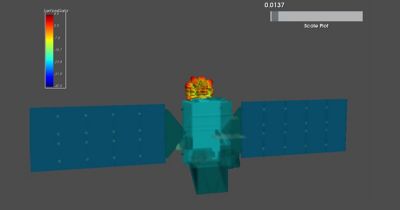-
-
Accédez au logiciel étudiant gratuit
Ansys donne les moyens à la prochaine génération d'ingénieurs
Les étudiants ont accès gratuitement à un logiciel de simulation de classe mondiale.
-
Connectez-vous avec Ansys maintenant !
Concevez votre avenir
Connectez-vous à Ansys pour découvrir comment la simulation peut alimenter votre prochaine percée.
Pays et régions
Espace client
Support
Communautés partenaires
Contacter le service commercial
Pour les États-Unis et le Canada
S'inscrire
Essais gratuits
Produits & Services
Apprendre
À propos d'Ansys
Back
Produits & Services
Back
Apprendre
Ansys donne les moyens à la prochaine génération d'ingénieurs
Les étudiants ont accès gratuitement à un logiciel de simulation de classe mondiale.
Back
À propos d'Ansys
Concevez votre avenir
Connectez-vous à Ansys pour découvrir comment la simulation peut alimenter votre prochaine percée.
Espace client
Support
Communautés partenaires
Contacter le service commercial
Pour les États-Unis et le Canada
S'inscrire
Essais gratuits
ANSYS BLOG
September 26, 2023
Automating HFSS Antenna Placement Workflow with PyAEDT
Antenna designs can reach daunting levels of complexity, and nowhere is that truer than in advanced 5G and 6G systems. One of the most difficult problems in this design space is signal degradation stemming from electromagnetic (EM) interaction between the phased array antenna and the host structure itself, such as a base station or satellites. It is a pernicious issue that takes several advanced solver technologies and tools to properly address.
Phased arrays are a necessity for new communication systems. They bring multiple antenna elements to bear on forming and steering a beam onto targets that are often in motion. This will become a critical issue especially in 6G, as satellites will enter the network and must maintain broadcasting service quality despite the distances involved.
There are several numerical methods available in Ansys HFSS to help with network designs in which nodes may be separated by hundreds of miles. Of particular importance in helping to simulate the antenna is the FA-DDM (finite array domain decomposition method) solver, which attains gold-standard accuracy in simulating antenna array performance. The SBR+ (shooting and bouncing ray) solver further computes the installed antenna performance over multiple scan angles. Isolated antenna simulations from HFSS can be used in hybrid HFSS SBR+ to assess the antenna interaction with its host and environment.

However, the electromagnetic environment in which the phased array antenna operates is much more complicated. Deploying these networks requires engineers to take a system-level approach to understand how the placement of the antenna may impact the operations of these networks. With Ansys Systems Tool Kit (STK), engineers can deploy a representative simulation environment, and the simulated antennas can be added to this framework to understand the final network performance.
All these steps require different tools and engineering teams. With automation technologies like PyAEDT, engineers could access all these solutions and knowledge through automated workflows.
PyAEDT is an open-source Python library that interacts directly with the application programming interface (API) of Ansys Electronics Desktop (AEDT) to make workflow automation simpler. PyAEDT is part of the larger PyAnsys effort to facilitate the use of Ansys technologies directly from Python. With PyAEDT, the entire antenna placement workflow can be easily automated.
There are many important details behind the multiple simulation tools and their operation in concert to resolve the antenna-host structure coupling problem discussed above. All of this will be explored in the technical webinar “Automating HFSS Antenna Placement Workflow with PyAEDT,” which will broadcast October 10. Ansys subject matter experts Massimo Capodiferro and Samuel Lopez will present the topic by starting with a description of PyAEDT. The conversation will then move to illustrating the creation of an antenna placement setup using the HFSS FA-DDM and SBR+ solvers. Python scripting will be used to post-process the antenna simulation results. Finally, the output of the Python script with be imported into STK.
Sign up for the "Automating HFSS Antenna Placement Workflow with PyAEDT" webinar.